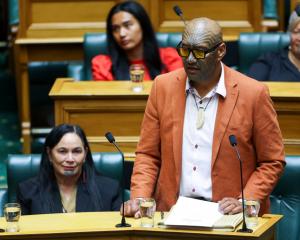What a veritable feast of sport. Dunedin, Otago and the South could so easily have become sporting backwaters. Instead, we are spoilt for choice.
What a line-up there has been: the twenty/20 cricket final, the opening Highlanders rugby fixture, the Warriors rugby league match against the Brisbane Broncos, A-League football between the Phoenix and the Melbourne Heart, English cricketers and top-flight golf - including teenage star Lydia Ko - in Queenstown. And what an array awaits: in a few weeks the All Whites in a World Cup qualifier, an All Black-Australia rugby test later in the season and this morning, weather permitting, test cricket comes to town. Anyone with any interest in sport should be excited. Has it ever been this concentrated, this good?
We, in the South, can dwell in small, liveable communities and still revel in elite live sport. While wall-to-wall sport beams into living rooms via satellites every day from all over the planet, there is nothing like seeing the stars in the flesh, in the unique perspective and different atmosphere of being at the ground.
Without doubt, it is the ''grounds'' that have made the difference both in attracting top sport and in the enjoyment of them. Putting aside for the moment - if that is possible - the $228 million question of paying for Forsyth Barr Stadium and also the cost of running it, there is little doubt it is the envy of many and has been a catalyst in attracting big games. It also should be acknowledged Dunedin was elevated as the alternative South Island venue when the Christchurch earthquakes wrecked Lancaster Park stadium.
The pressure was building on dear old Carisbrook with each passing year, and something major was required if Dunedin was to have a chance to host rugby's best tests. Similarly, it is hard to have seen Carisbrook being chosen for the cricket tests of recent years against the West Indies, star-packed South Africa and now the English, the world's No 2 test cricket side. Even a good-sized test crowd scattered around Carisbrook's concrete stands would have looked and felt inadequate, The University Oval, in contrast, will be close to full, and cricketing whites and red balls can be set off by their classic millieu: the green of grass, tree and bank and an historic and picturesque grandstand.
The end, fortunately, has been lopped off the former art gallery building and the boundaries, while hardly huge, are adequate and better than at most New Zealand venues.
The decision to focus on and develop the University Oval as a boutique ground in a lovely setting was risky as well as far-sighted. Others centres, like Hamilton and Napier, keep raising the stakes and the millions spent here, by cricket and by private donors, could have come to little. Thankfully, the opposite has so far occurred. Encouragingly, Queenstown and Dunedin also seem to be progressing symbiotically. The international resort attracts teams and individuals for play and work, and then they come on to Dunedin. The Hills golf course and the Events Centre ground at Queenstown are jaw-droppingly beautiful, with English test cricketer Ian Bell last week saying the cricket field's mountainous backdrop is unrivalled anywhere.
There is also something special about a test against England, the game's nursery and spiritual home. We have been forced to drop, for worse but mostly for better, Carisbrook, where players like MCC himself, Michael ''Colin'' Cowdrey, once played, but we can still carry our reminiscences forward. With the likes of Kevin Pietersen, the imperious batsman who would have been a star in any England team, run-machine Alistair Cook and the sultan of swing, Jimmy Anderson, there is now the opportunity to see today's best and to create a new era of memories.
We might have only 300,000 people in Otago and Southland, but we are hosting the premier form of cricket with high-class guests. Bring on the first over, the first session, the first day. Bring on, too, the best of New Zealand's fighting spirit, because that is what our team will need over the next five days.












